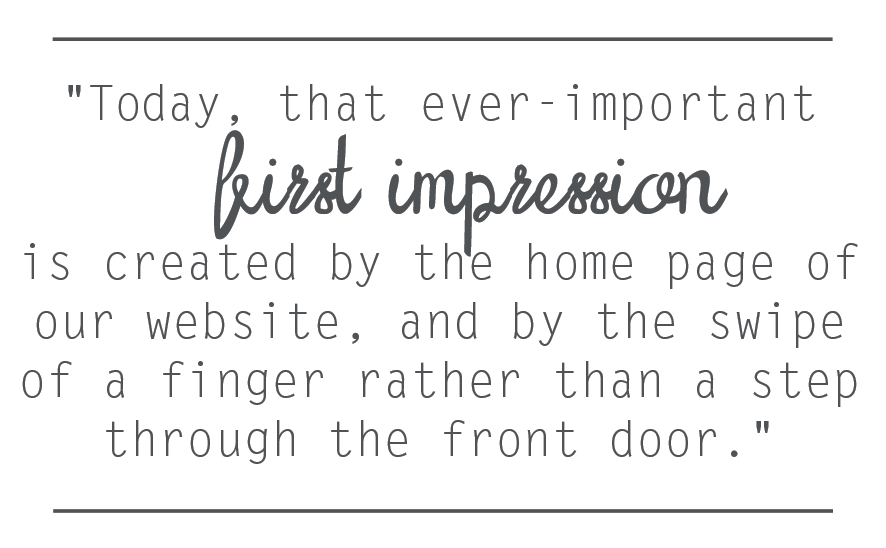The thought of expanding your business is exciting. Facilities can have a dramatic positive impact on bottom lines. However, if the end result does not meet your desires and needs, buyer’s remorse can be significant and the reparations costly. There are many common, yet often avoidable, pitfalls that affect construction-related projects. Being aware of these pitfalls in advance and putting the right team, processes and procedures in place, can minimize the opportunity for negative results.
Integrated approach: Each construction-related professional provides a particular strength and unique understanding within their field. Hiring experienced companies with a strong background of collaborating with other professionals to provide integrated delivery is critical to a successful project. Ensure a fully required scope is covered and proposals accurately reflect the required scope.
Stakeholders: Commercial facilities projects involve many different players including business owners, officers, owner’s representatives, architects, engineers, general contractors, subcontractors, construction managers, government entities and, in many situations, real estate brokers. Strong, clear leadership that communicates the scope, budget and schedule early on, defines job rules and expectations, and is prepared to make changes as needed, will facilitate the continued alignment of your project. As the list of stakeholders grows, it can be increasingly difficult to keep everyone in the loop—with the coordination of schedule requirements, the budget and scope changes—and moving toward the same goal.
Continue reading

 Login
Login





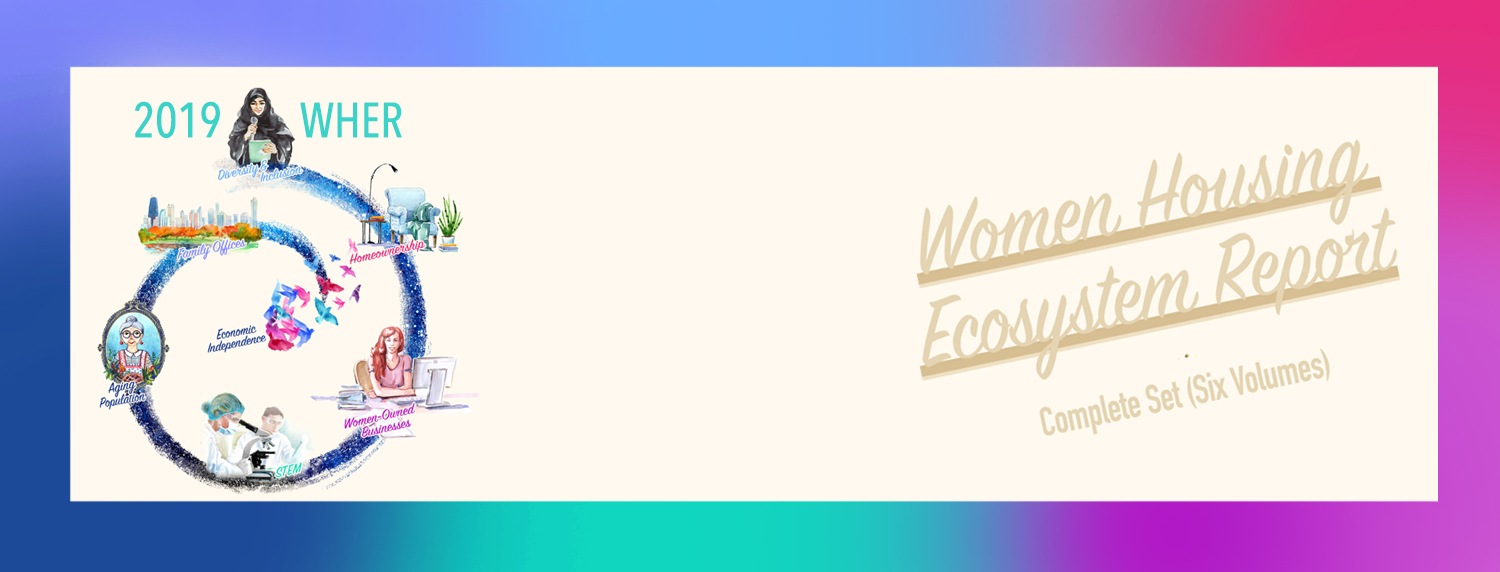













 Enacted by section 8(m) of the Small Business Act, the Women-Owned Small Business (WOSB) Program authorizes Federal contracting officers to limit competition for Federal contracts to qualified Women-Owned Small Businesses (WOSBs) or Economically Disadvantaged Women-Owned Small Businesses (EDWOSBs), in select industries.
Enacted by section 8(m) of the Small Business Act, the Women-Owned Small Business (WOSB) Program authorizes Federal contracting officers to limit competition for Federal contracts to qualified Women-Owned Small Businesses (WOSBs) or Economically Disadvantaged Women-Owned Small Businesses (EDWOSBs), in select industries.

 Women-owned businesses account for nearly 1.5 trillion dollars in revenue, and female entrepreneurs employ over 7.9 million people in the U.S. With such striking statistics, it’s easy to see how women are leading the way in job creation and having a major economic impact. Women are a true inspiration in my work every day, and I believe technology continues to be a catalyst in helping them achieve even more.
Women-owned businesses account for nearly 1.5 trillion dollars in revenue, and female entrepreneurs employ over 7.9 million people in the U.S. With such striking statistics, it’s easy to see how women are leading the way in job creation and having a major economic impact. Women are a true inspiration in my work every day, and I believe technology continues to be a catalyst in helping them achieve even more. CINDY BATES
CINDY BATES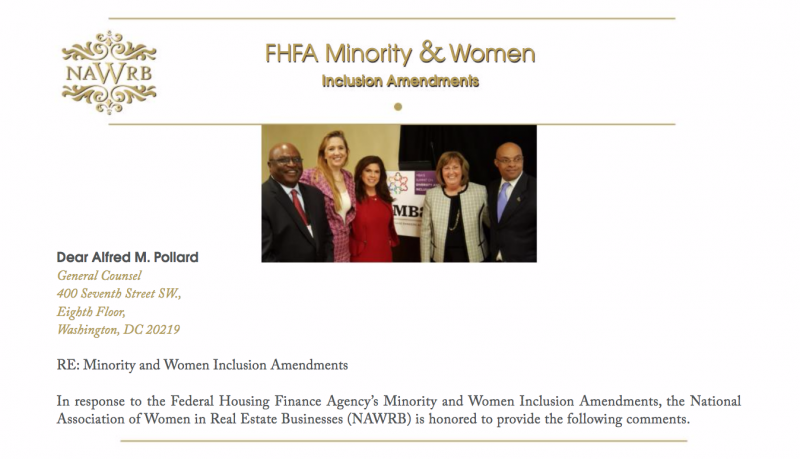
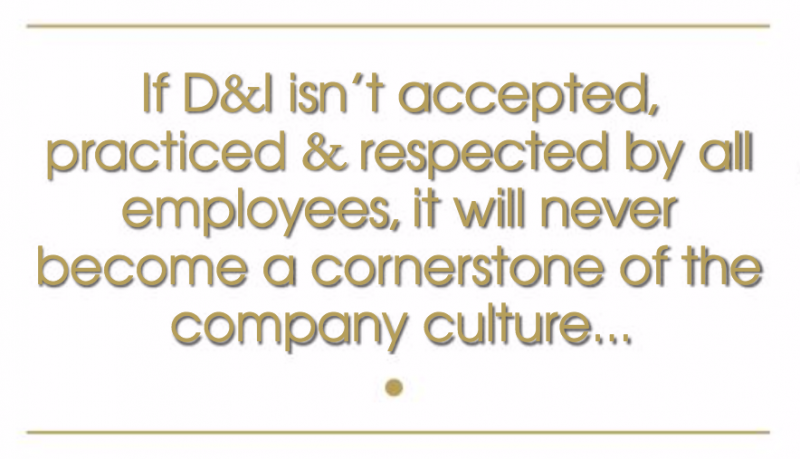 e:
e: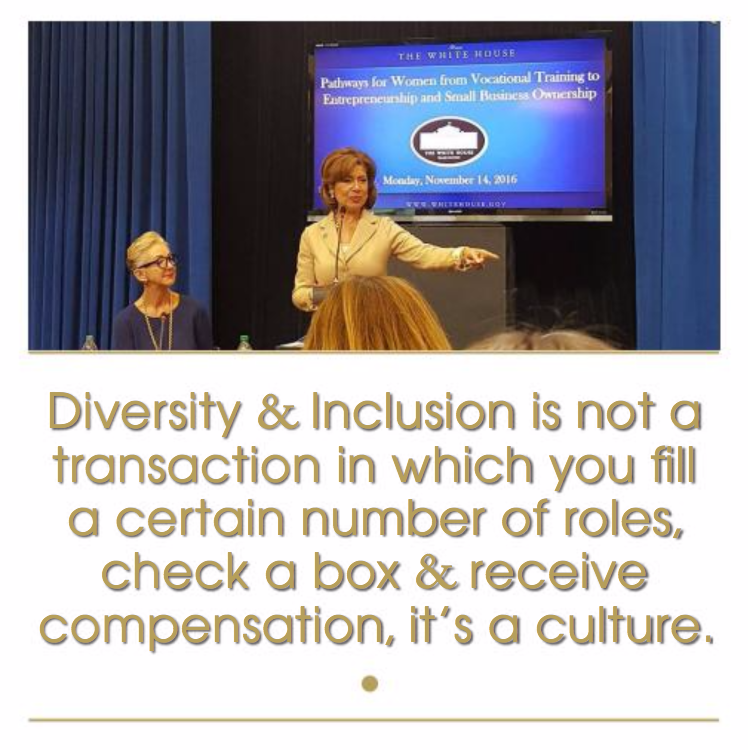 Diversity and inclusion is the right thing to do. An inclusive workplace is a better workplace, both in performance—as a recent Grant Thornton study reveals the opportunity cost for American S&P 500 companies lacking gender diversity in their boardrooms is $567 billion—and in company culture.
Diversity and inclusion is the right thing to do. An inclusive workplace is a better workplace, both in performance—as a recent Grant Thornton study reveals the opportunity cost for American S&P 500 companies lacking gender diversity in their boardrooms is $567 billion—and in company culture. Diversity and inclusion is not a transaction in which you fill a certain number of roles, check a box and receive compensation, it’s a culture. By not creating a system strictly reliant on metrics, entities can help employees better understand and connect to their D&I work.
Diversity and inclusion is not a transaction in which you fill a certain number of roles, check a box and receive compensation, it’s a culture. By not creating a system strictly reliant on metrics, entities can help employees better understand and connect to their D&I work.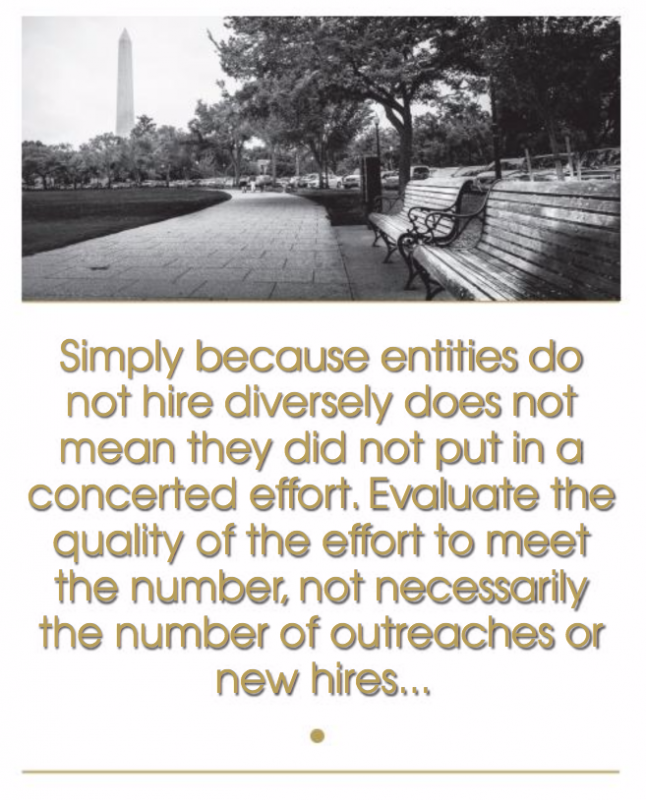 Further Suggestions
Further Suggestions
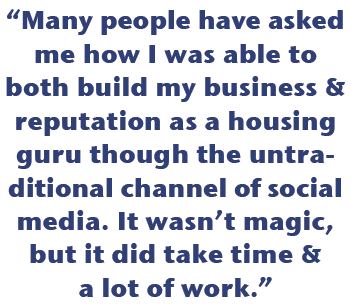 Many people have asked me how I was able to both build my business and reputation as a housing guru though the untraditional channel of social media. It wasn’t magic, but it did take time and a lot of work. If one is willing to put in the effort, any dedicated, reasonably intelligent person who is truly interested in their industry can do the same thing. The purpose of this article is to share my experience in building a social media presence and to provide a quasi-tutorial on how a real estate professional (be it an agent, broker, loan officer or anything in between), can learn to use the vast amount of data available on the internet to become a sought-after expert in their field.
Many people have asked me how I was able to both build my business and reputation as a housing guru though the untraditional channel of social media. It wasn’t magic, but it did take time and a lot of work. If one is willing to put in the effort, any dedicated, reasonably intelligent person who is truly interested in their industry can do the same thing. The purpose of this article is to share my experience in building a social media presence and to provide a quasi-tutorial on how a real estate professional (be it an agent, broker, loan officer or anything in between), can learn to use the vast amount of data available on the internet to become a sought-after expert in their field.

 I remember as a kid when I ordered my first Ben & Jerry’s ice cream and when I bought my first body lotion from The Body Shop. Those were the moments when it became very clear to me that business and doing good could go hand in hand. From then on I was always incredibly interested in the idea of socially responsible businesses.
I remember as a kid when I ordered my first Ben & Jerry’s ice cream and when I bought my first body lotion from The Body Shop. Those were the moments when it became very clear to me that business and doing good could go hand in hand. From then on I was always incredibly interested in the idea of socially responsible businesses.
